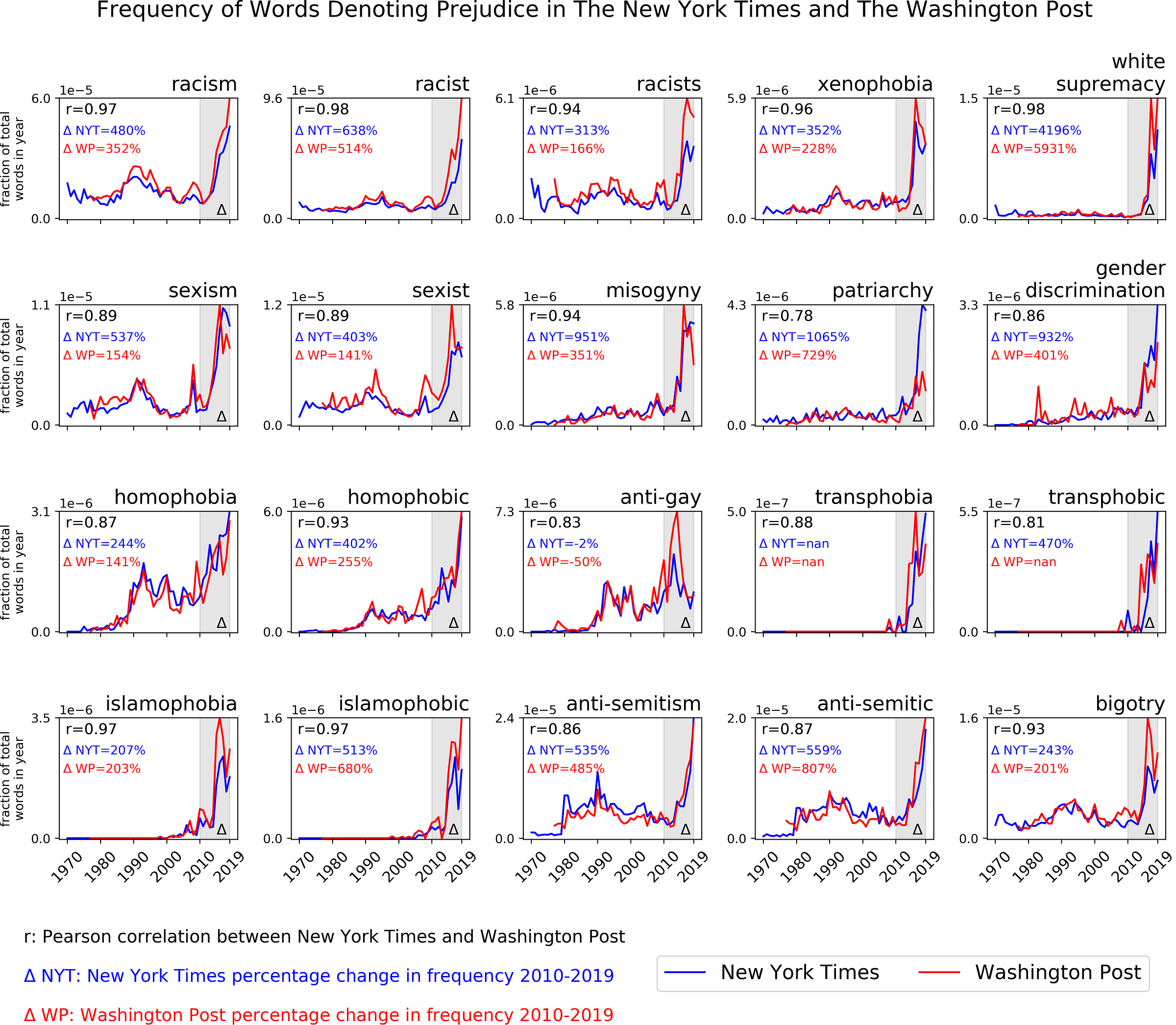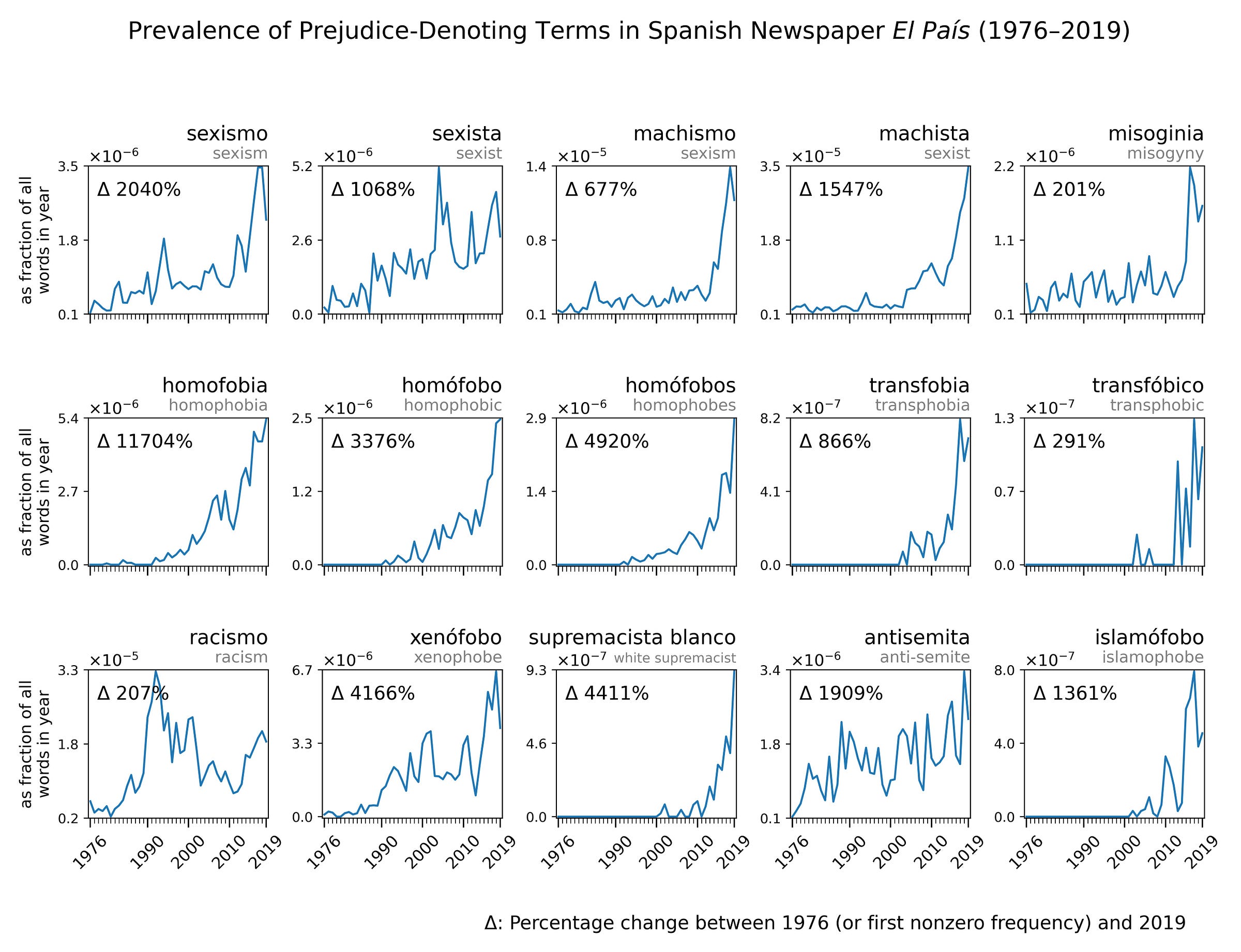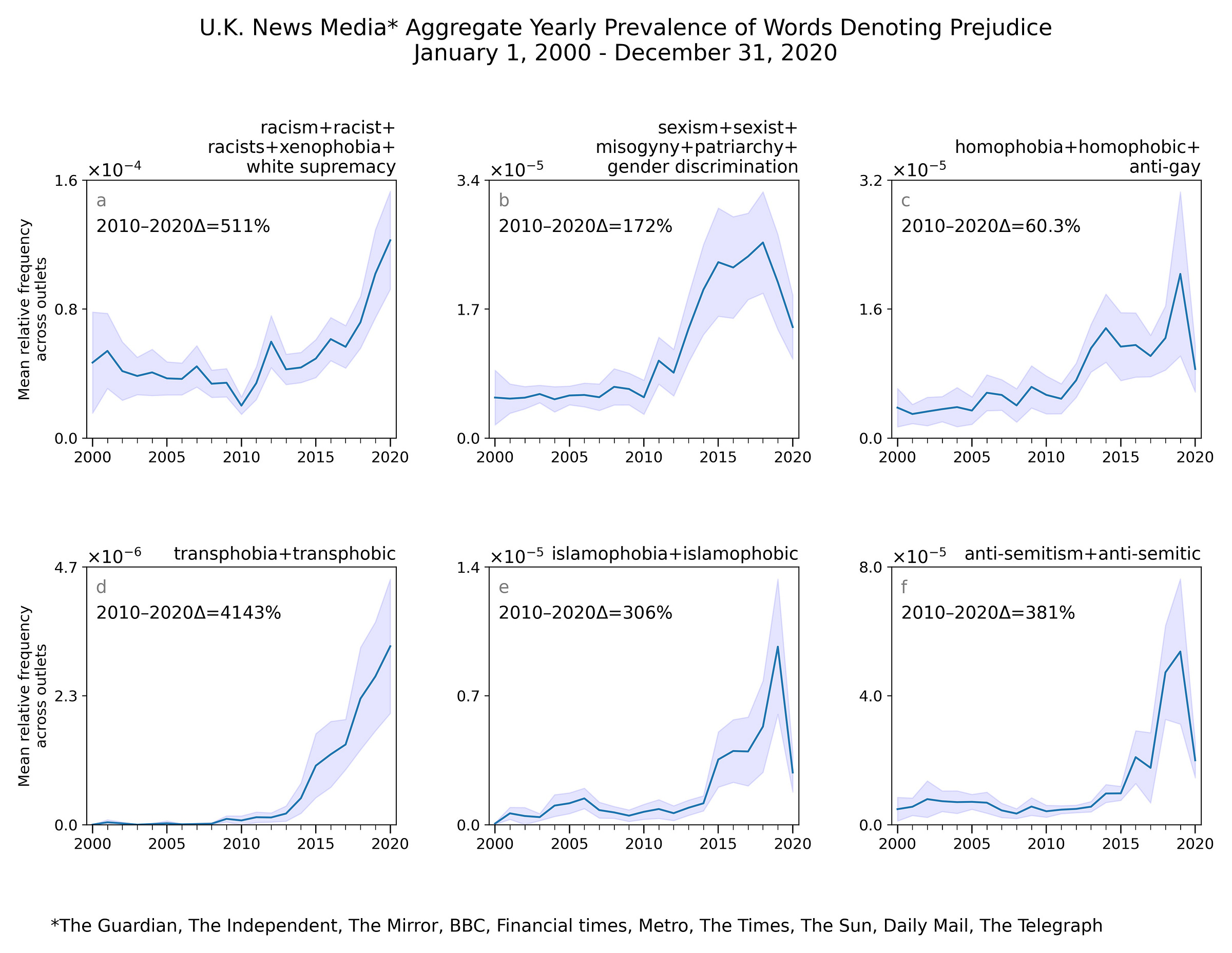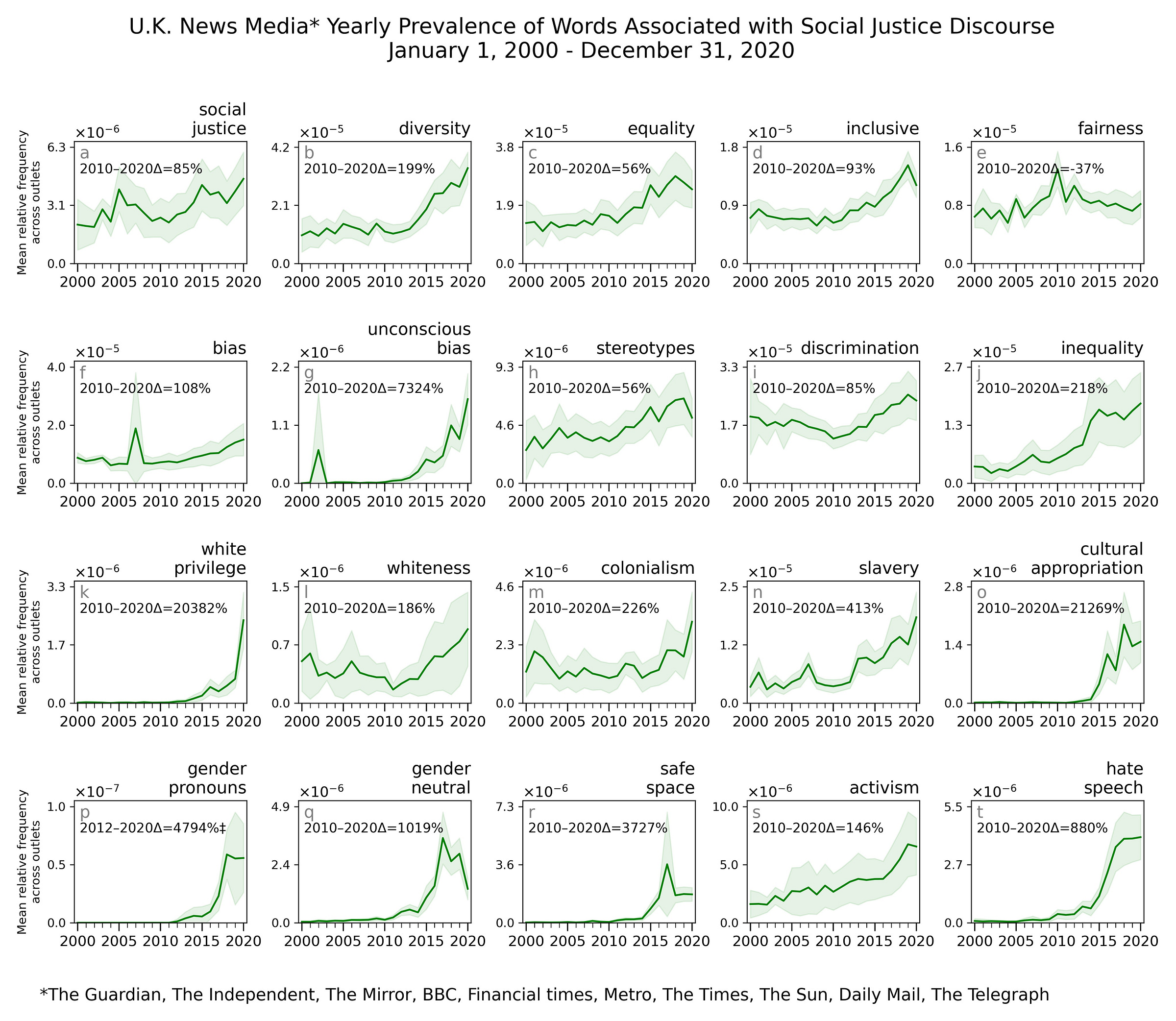The Increasing Prominence of Prejudice and Social Justice Rhetoric in UK News Media
I have recently published a report with Matthew Goodwin about the increasing prominence of prejudice and social justice rhetoric in UK news media.
Recent years have seen considerable debate about the rise of political polarization in British society. Specifically, over the last decade, various studies have suggested that the UK is now rapidly following the United States into a more polarized politics in which intensifying ‘culture wars’ over issues such as racism, identity, diversity, the legacy of history, and ‘social justice’ or so-called ‘woke’ politics are becoming far more prominent.
While this debate typically focuses on the role of party politics, much less attention has focused on the relationship between news media and rising polarization. My previous research identified a recent sharp increase in the overall prominence of prejudice rhetoric in US news media:
and in Spanish media:
Our purpose in this report was to explore whether similar trends are now also visible in the UK. We use computational content analysis to explore the chronological prevalence in UK news media of words which denounce prejudice (i.e., sexism, racism, homophobia, etc.) and ‘social justice’ or ‘woke’ rhetoric (i.e., white privilege, whiteness, cultural appropriation, diversity, etc.). We present analyses of UK media usage of these terms between the years 2000 and 2020 in 16 million news and opinion articles, published in a nationally representative sample of ten popular British media outlets: The Guardian, The Independent, The Daily Mirror, BBC, The Times, Financial Times, Metro, The Telegraph, Daily Mail and The Sun.
Despite the potential for occasional noisy outliers in any big data analysis, overall, we are confident that our frequency metrics are representative of word prevalence in print news media content. For readers who are unfamiliar with this method, the next Figure provides a visual demonstration, presenting the min-max scaled yearly frequencies of some illustrative terms in The Guardian during the past twenty years. The figure shows how our method accurately captures media coverage over time of key events, parties and political developments, with coverage of terms such as UKIP, Brexit, the Arab Spring, or the breakaway political party Change UK rising and falling at the expected points in time. The temporal sensitivity of the trends gives us confidence in our data, analysis, and findings.
Consistent with recent studies in the U.S. and Spain, we find that references to prejudice have increased sharply in UK media in recent years. Between 2010 and 2020, terms such as racism and white supremacy in popular UK media outlets increased on average by 769% and 2,827% respectively, while terms such as sexism, patriarchy and misogyny increased by 169%, 336% and 237% each. Additional terms such as transphobia, islamophobia and anti-semitism increased by 2,578%, 289% and 469% respectively.
The next figure shows the aggregation of the terms into 6 prejudice-type clusters:
Patterns in UK and US media are highly in sync:
These sharp increases are pervasive across UK media, regardless of their ideological leanings. But overall prevalence tends to be larger in left-leaning outlets. The one exception to this trend is for the period 2015 to 2020, when references to anti-Semitism were more prominent in right-leaning news outlets.
Mentions of prejudice have also become far more prominent in the BBC, the UK’s leading public service outlet. From 2010 to 2020, mentions in BBC content of terms suggestive of racism have increased by over 802% while mentions of terms suggestive of sexism have increased by 610%. Mentions of homophobia and transphobia increased by 134% and 3,341% respectively. Terms signifying islamophobia and anti-Semitism increased by 585% and 2,431%.
Similarly, terms associated with social justice discourse have also markedly increased over the same temporal period across UK news media: diversity (199%), activism (146%), hate speech (880%), inequality (218%), gender-neutral (1,019%) or slavery (413%).
How might we explain these discursive shifts across UK news media and elsewhere? We suggest three possible explanations. The first is that despite research showing a decline in overt expressions of prejudicial attitudes since the 1970s, there is far greater public sensitivity in Britain and other democracies over actual or perceived prejudice. A relaxation of the criteria used to define what counts as prejudice, in the form of concept creep and prevalence-induced concept change, might also be playing a role in this process.
An alternative second explanation is that the center of ideological gravity in UK media newsrooms has shifted in recent years. In Britain and other Western democracies, surveys have shown that journalists lean more to the left than the general population. Furthermore, the journalistic profession appears to be moving further leftwards, especially as prestige news media is increasingly organized and edited by university graduates from elite family backgrounds and universities who have drifted to the left on cultural issues. Therefore, the increasingly liberal ideological composition of newsrooms might shape journalists’ choices of topics to cover since people who identify more strongly on the left are far more focused on the topics of prejudice and social justice.
A third potential explanation for the rising incidence of prejudice and social justice rhetoric in news media content could be the recent emergence of financial incentives for media organizations to maximize diffusion of news articles through social media channels by triggering negative sentiment/emotions, and/or political out-group animosity, both of which have been shown to drive engagement of social media-based news consumption.
Unfortunately, our methods cannot adjudicate between the three hypotheses proposed above. Yet, by having documented, descriptively, and for the first time, key UK media trends over time, we hope to have contributed to the debate. We also hope that future research examines the potential psychological and social consequences of a citizenry that regularly consumes a news media diet with increasing mentions of words that denounce prejudice embedded within it.










